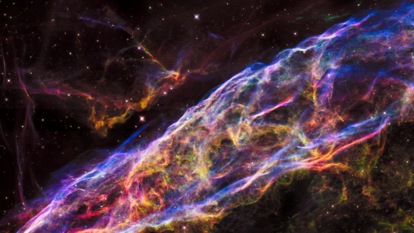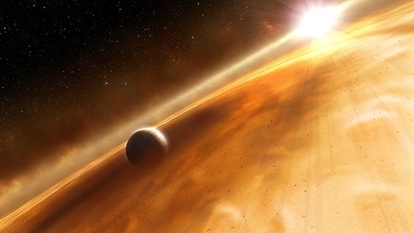NASA explains difference between Solar Flares and coronal mass ejection; know effect on Earth
Both the eruptions on the Sun that is solar flares and coronal mass ejection (CME) involve gigantic explosions of energy, says NASA.
_1641610017542_1641610027818.jpg)
The fireball in the sky, also known as the Sun is not only a source of energy and light for humans but is also one of the biggest subject of interest for scientists and researchers. And as we all know that there are many kinds of eruptions on the sun, today we will be talking about the solar flares and coronal mass ejection (CME). As per the information provided by NASA, both solar flare and CME involve gigantic explosions of energy, but are otherwise quite different.
The two phenomena do sometimes occur at the same time, certainly, the strongest flares are almost always correlated with coronal mass ejections. However what needs to be noted is that they emit different things, they look and travel differently, and they have different effects near planets.
How solar flares and coronal mass ejections (CMEs) get created
Both eruptions (solar flares and coronal mass ejections (CME)) are created when the motion of the sun's interior contorts its own magnetic fields. NASA explains, like the sudden release of a twisted rubber band, the magnetic fields explosively realign, driving vast amounts of energy into space. This phenomenon can create a sudden flash of light that is a solar flare.
Containing tremendous amounts of energy, flares can last minutes to hours. Traveling at the speed of light, it takes eight minutes for the light from a solar flare to reach Earth. Some of the energy released in the flare also accelerates very high energy particles that can reach Earth in tens of minutes.
The magnetic contortions can also create a different kind of explosion that hurls solar matter into space. These are the coronal mass ejections (CMEs). The flare is like the muzzle flash, which can be seen anywhere in the vicinity. "The CME is like the cannonball, propelled forward in a single, preferential direction, this mass ejected from the barrel only affecting a targeted area," NASA said in a report.
This is the CME, an immense cloud of magnetized particles hurled into space. Traveling over a million miles per hour, the hot material called plasma takes up to three days to reach Earth.
How to see differences between the solar flares and coronal mass ejections (CME)
The differences between the two types of explosions can be seen through solar telescopes. It can be known that the flares appear as a bright light and CMEs appear as enormous fans of gas swelling into space.
Effect of solar flares and coronal mass ejections (CME) at Earth
According to NASA, flares and CMEs have different effects at Earth as well. The energy from a flare can disrupt the area of the atmosphere through which radio waves travel. This can lead to degradation and, at worst, temporary blackouts in navigation and communications signals.
While CMEs can funnel particles into near-Earth space. A CME can jostle Earth's magnetic fields creating currents that drive particles down toward Earth's poles. When these react with oxygen and nitrogen, they help create the aurora, also known as the Northern and Southern Lights. Additionally, the magnetic changes can affect a variety of human technologies. High frequency radio waves can be degraded: Radios transmit static, and GPS coordinates stray by a few yards. The magnetic oscillations can also create electrical currents in utility grids on Earth that can overload electrical systems when power companies are not prepared.
The U.S. National Oceanic and Atmospheric Administration's Space Weather Prediction Center runs simulations and can make predictions about when the CME will arrive at Earth based on this and other data. They then alert appropriate groups so that power companies, airlines, and other stakeholders can take precautions in the event of a solar storm.
Catch all the Latest Tech News, Mobile News, Laptop News, Gaming news, Wearables News , How To News, also keep up with us on Whatsapp channel,Twitter, Facebook, Google News, and Instagram. For our latest videos, subscribe to our YouTube channel.




































